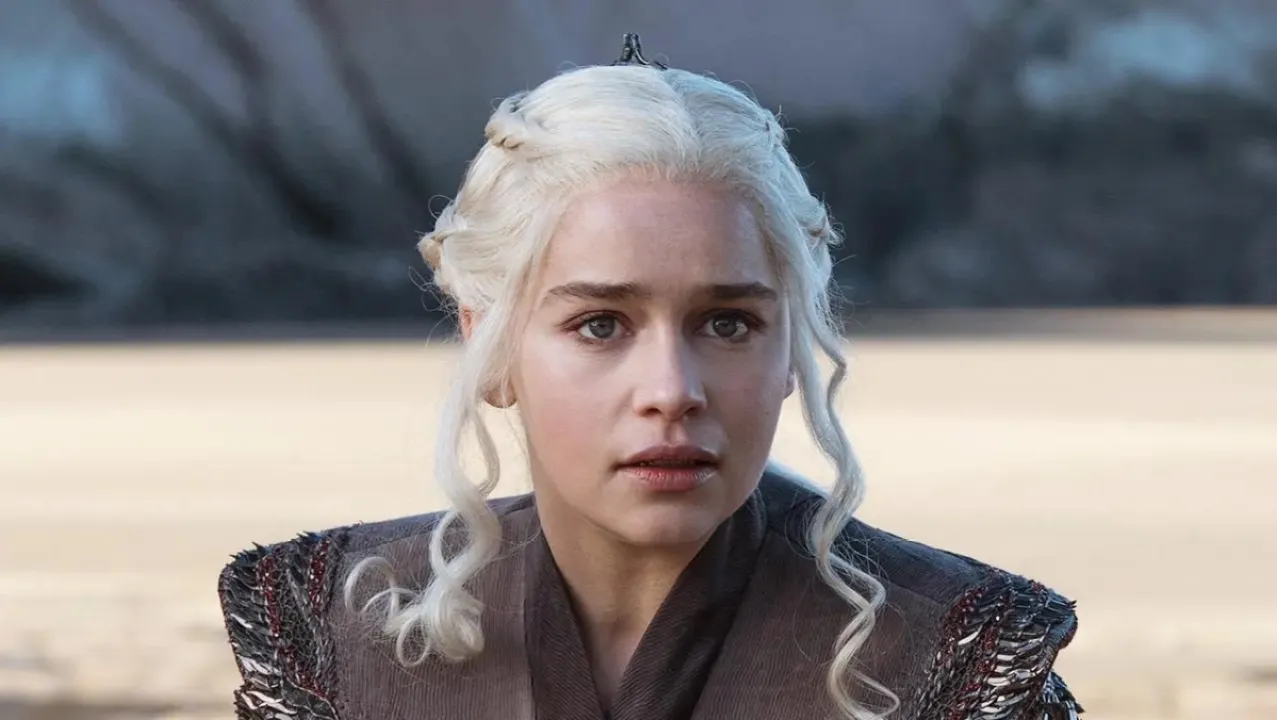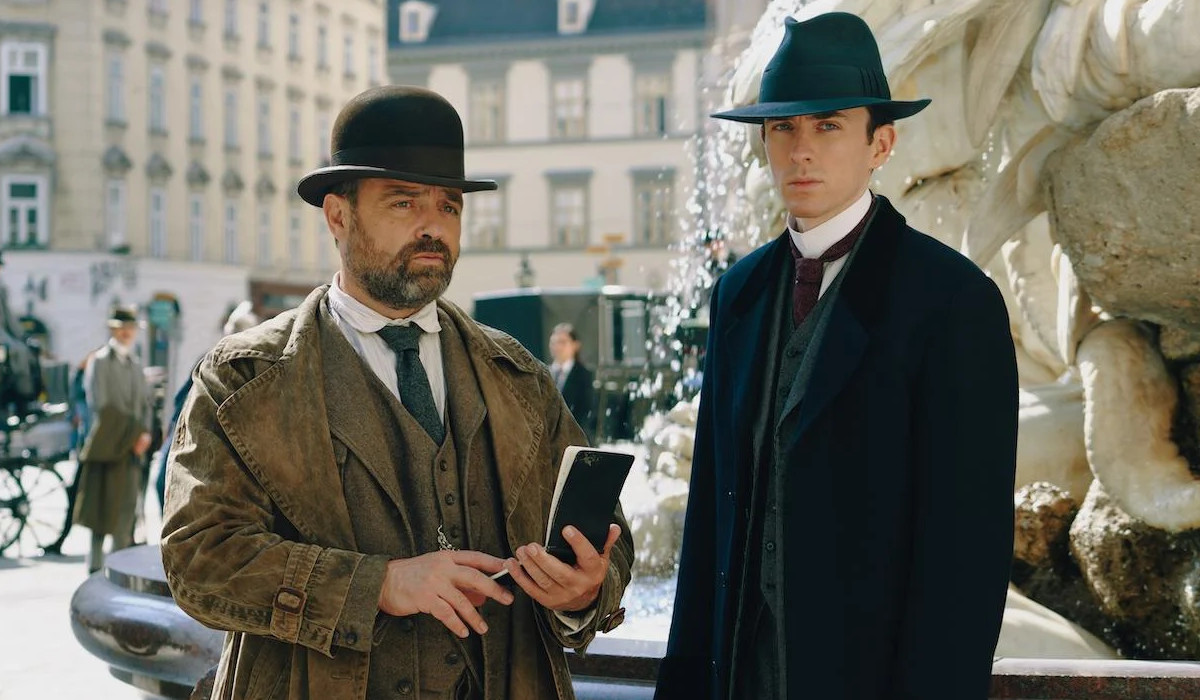Spoilers ahead for the season 2 finale of House of the Dragon, “The Queen Who Ever Was”. Be warned.
One of the most intriguing scenes of the entire season 2 finale of House of the Dragon, “The Queen Who Ever Was,” was Prince Daemon’s weirwood-induced vision in the godswood at Harrenhal. We needed a culmination of that whole horror-coded arc, after all, and the show certainly delivered with Daemon getting treated to brief glimpses of what the future holds both for him and his House.
He sees Rhaenyra on the Iron Throne, dead dragons, the Targaryen bastard who will become the Three-Eyed Raven, the terrible advance of the Others led by the Night King—which no, is not Daemon himself, no matter what the Internet theories say—Helaena prophesizing Daemon’s own death and then, her. Heralded by a red comet blazing through the sky, the same one we see throughout the second season of Game of Thrones, Daemon sees his distant descendant Daenerys Targaryen, who has just given birth to dragons in the middle of the Dothraki Sea.

Daenerys, the Prince That Was Promised
In-universe, this just confirmed once more the massive role that Daenerys plays in the overarching story of A Song of Ice and Fire. Her birth is such a powerful event that it sends massive ripples throughout history—both backward and forward. That’s because Daenerys really is the one who will fulfill the prophecy of the Prince That Was Promised, which House of the Dragon told us was Aegon Targaryen’s dream, the prophetic vision that convinced him to set in motion the conquest of Westeros with his sisters, Visenya and Rhaenys.
The prophecy of the Prince That Was Promised has different versions, depending on who tells it throughout the saga, but the gist of it is that this legendary savior will be born amidst salt and smoke when darkness gathers, heralded by a bleeding star. Several characters are believed to be the Prince That Was Promised in the books, from Rhaegar Targaryen to Jon Snow to Stannis Baratheon, but it’s clear that it was always meant to be Daenerys.

The “bleeding star” is the comet that is seen in the sky immediately after her dragons hatch at the end of A Game of Thrones or season one of GoT; darkness very much is gathering, since the threat of the Others and their Long Night looms all over the story. The “salt and smoke” could either be a reference to Dragonstone, where Daenerys was born, or Drogo’s pyre, where she was reborn alongside her three dragons.
The show also discussed Daenerys being the Prince That Was Promised—by reminding the audience that Valyrian isn’t a gendered language, and so the word “dārilaros” could translate to both “prince” and “princess”—before throwing it all away with the sham that was the adaptation of the Long Night.
The face of A Song of Ice and Fire
Daemon’s vision of Daenerys—I just know they tried to get Emilia Clarke to do a cameo, even if they won’t admit it—doesn’t just establish her pivotal role in the story but also how she’s undoubtedly the face of every screen adaptation of anything A Song of Ice and Fire related.
Sure, neither Game of Thrones nor House of the Dragon lacks unique and iconic characters, but arguably no one is at the level Daenerys is. She’s immediately recognizable, the titles she’s known to have entered pop culture speak—from “Khaleesi” to “Mother of Dragons”—and she’s even the character that anchors House of the Dragon chronologically speaking, with her name appearing on screen before the show even properly begins.
And no, it’s not like Daenerys is a perfect character—no one in ASOIAF is, to be honest. She has a wide array of not-inconsiderable character flaws and is always walking the line of white saviorism, but her iconicity simply can’t be denied. House of the Dragon knows this very well, and so does HBO, and I’m willing to bet they regret how she was handled at the end of Game of Thrones.

But that rushed, horrible, frankly offensive ending still exists. I’m not saying Daenerys needed to sit down on the Iron Throne and start a Targ Restoration—that is never going to happen in the books either, come on—but her character deserved something better than the madness that comes out of nowhere after seven seasons of behavior that should be considered borderline saintly by Westerosi standards.
That’s also why all this retconning that House of the Dragon is trying to do doesn’t land like the showrunners probably intended it to—it almost feels like a mockery considering the end it all leads to. So Daenerys is the Prince That Was Promised, the only one who can prevent the world from falling into the Long Night, the most special of all members of House Targaryen? It sure didn’t seem like that when the Night King was destroyed by someone who had no connections to that subplot, or when she got triggered by bells that had absolutely nothing to do with her, or when she was stabbed in a moment of physical intimacy by someone she trusted.
Still, I’m nothing if not someone who can take a win when I see one—and the win in this case is that there will be no other Game of Thrones character like Daenerys Targaryen. Everyone is trying to replicate her impact and failing. She is the undisputed face of this narrative universe. She’s simply one of the best characters to ever character.









Published: Aug 10, 2024 01:00 pm